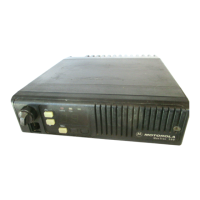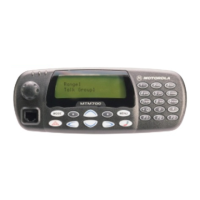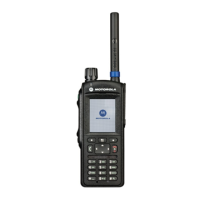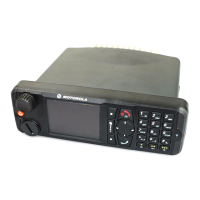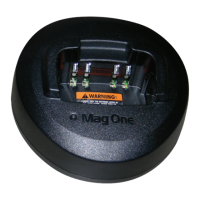
Do you have a question about the Motorola MAG ONE and is the answer not in the manual?
Information on safe RF energy use and control for occupational use.
FCC regulations for RF energy exposure limits for portable two-way radios.
Details compliance with national and international RF exposure standards.
Guidelines and procedures to control RF exposure and ensure compliance.
Instructions for safe and compliant operation of the radio.
Information on approved accessories for safe radio usage.
Links for further information on exposure requirements.
Information on potential EMI/EMC issues and precautions.
Guidelines for radio use in specific facilities like hospitals.
Instructions for radio use on aircraft.
Precautions for users with pacemakers and other medical devices.
Information on potential interference with hearing aids.
Advice on consulting manufacturers for other medical devices.
Regulations and tips for using radios while driving.
Warnings related to air bags, explosive atmospheres, and blasting caps.
Cautions regarding antennas and batteries.
Explanation of intrinsically safe radio approval and labeling.
Cautions for operating intrinsically safe equipment in hazardous areas.
Warnings about shipping and labeling of intrinsically safe radios.
Information on repairs for intrinsically safe Motorola products.
Guidance on approved accessories for intrinsically safe systems.
Detailed diagrams of the RF circuit board for VHF Band 1.
Defines the purpose and scope of the service manual.
Outlines Motorola's support services for product warranty and repairs.
Details warranty terms, conditions, and procedures for returning products.
Describes Motorola's support options after the warranty period ends.
Information on ordering replacement parts and product availability.
How to obtain technical assistance for troubleshooting and malfunctions.
Contact information for additional support from Motorola.
Introduces the theory of operation and circuit description for the radio.
Defines the purpose of the section: theory of operation and circuit analysis.
Provides a general overview of the radio's components and design.
Details the architecture and operation of the radio's receiver system.
Describes the initial stages of the receiver, including filters and amplifiers.
Explains the function of the first mixer in heterodyning the signal.
Details the intermediate frequency (IF) amplification stages and filtering.
Describes the squelch system and its control by the microprocessor.
Explains the operation of the transmitter and Phase-Locked Loop synthesizer.
Details the TX power amplifier stages, including pre-drive, drive, and final amp.
Describes the function of the antenna switch for TX and RX path sharing.
Explains the role of the low pass filter in suppressing spurious TX output.
Explains the Auto-Power Control (APC) circuit for stable TX power output.
Details the Phase-Locked Loop (PLL) synthesizer, VCTCXO, and loop filter.
Describes the dual VCO module for RX and TX, including frequency control.
Explains the audio processing and control circuits of the radio.
Details the RX audio path, de-emphasis, and amplification to the speaker.
Describes the circuit for decoding sub-audible signals like CTCSS and DCS.
Explains the TX audio path, pre-emphasis, and modulation.
Describes the circuit for encoding sub-audible signals for transmission.
Details the role and functions of the microprocessor in controlling the radio.
Detailed diagrams of the RF circuit board for VHF Band 2.
Detailed diagrams of the RF circuit board for UHF Band 1.
Detailed diagrams of the RF circuit board for UHF Band 2.
Detailed diagrams of the RF circuit board for UHF Band 4.

